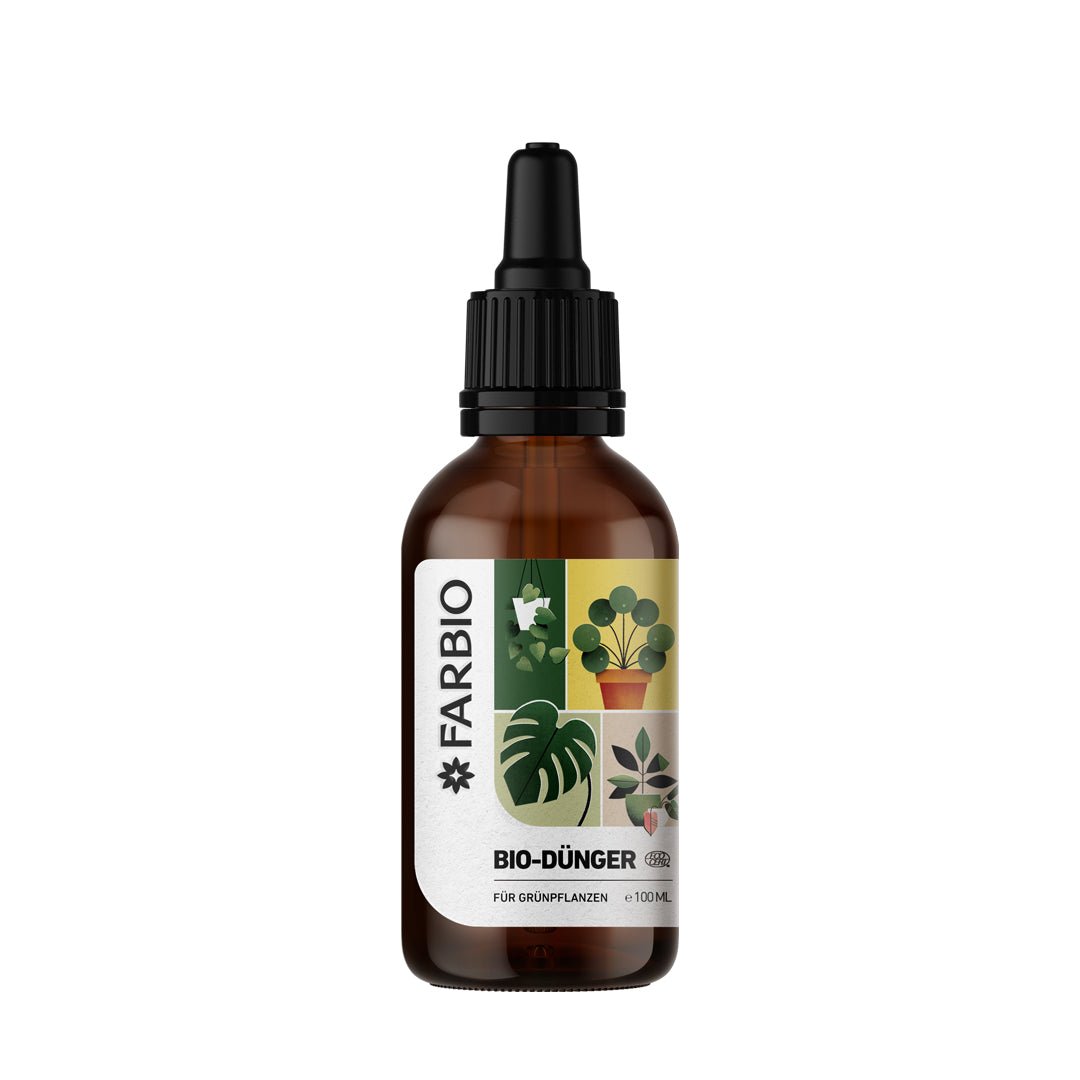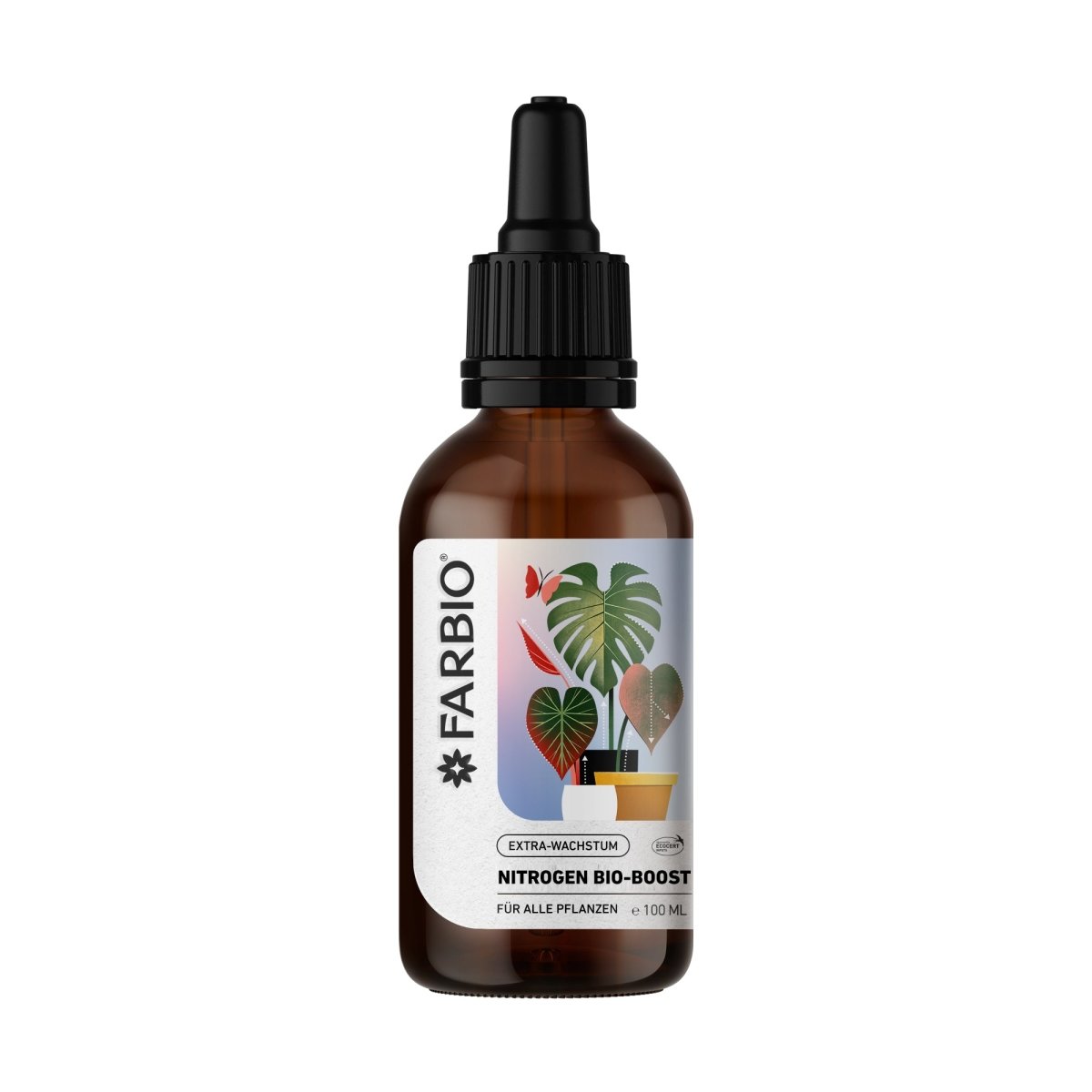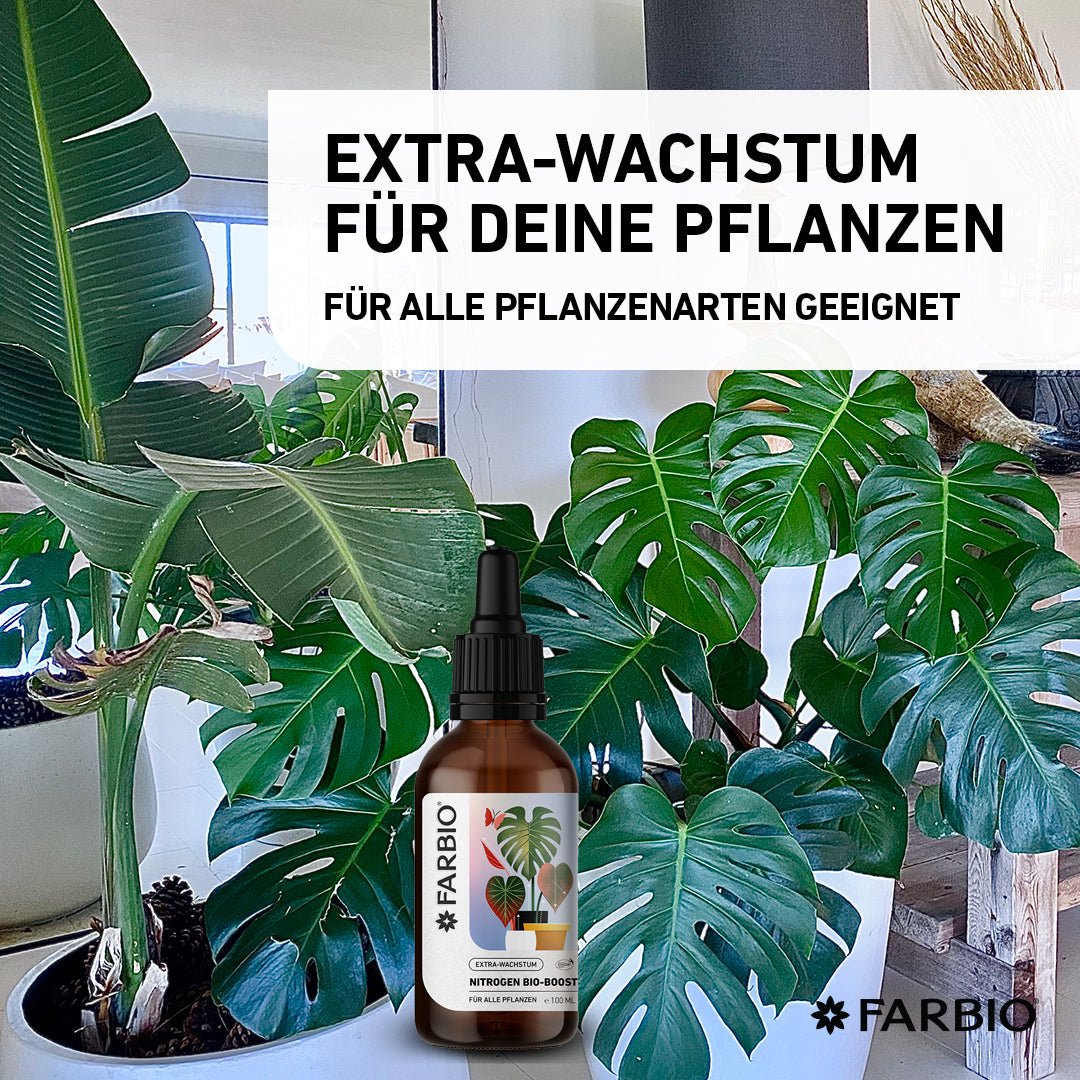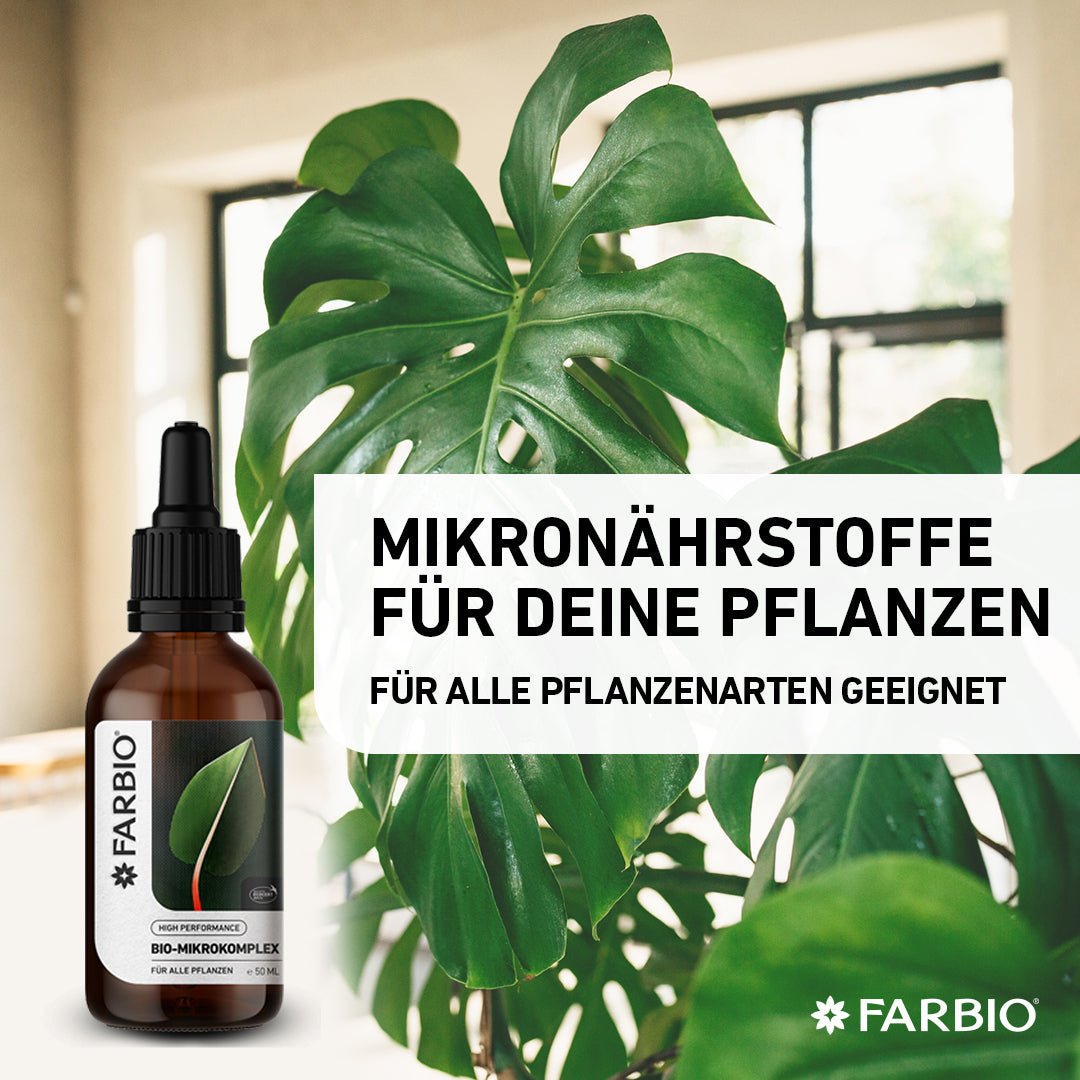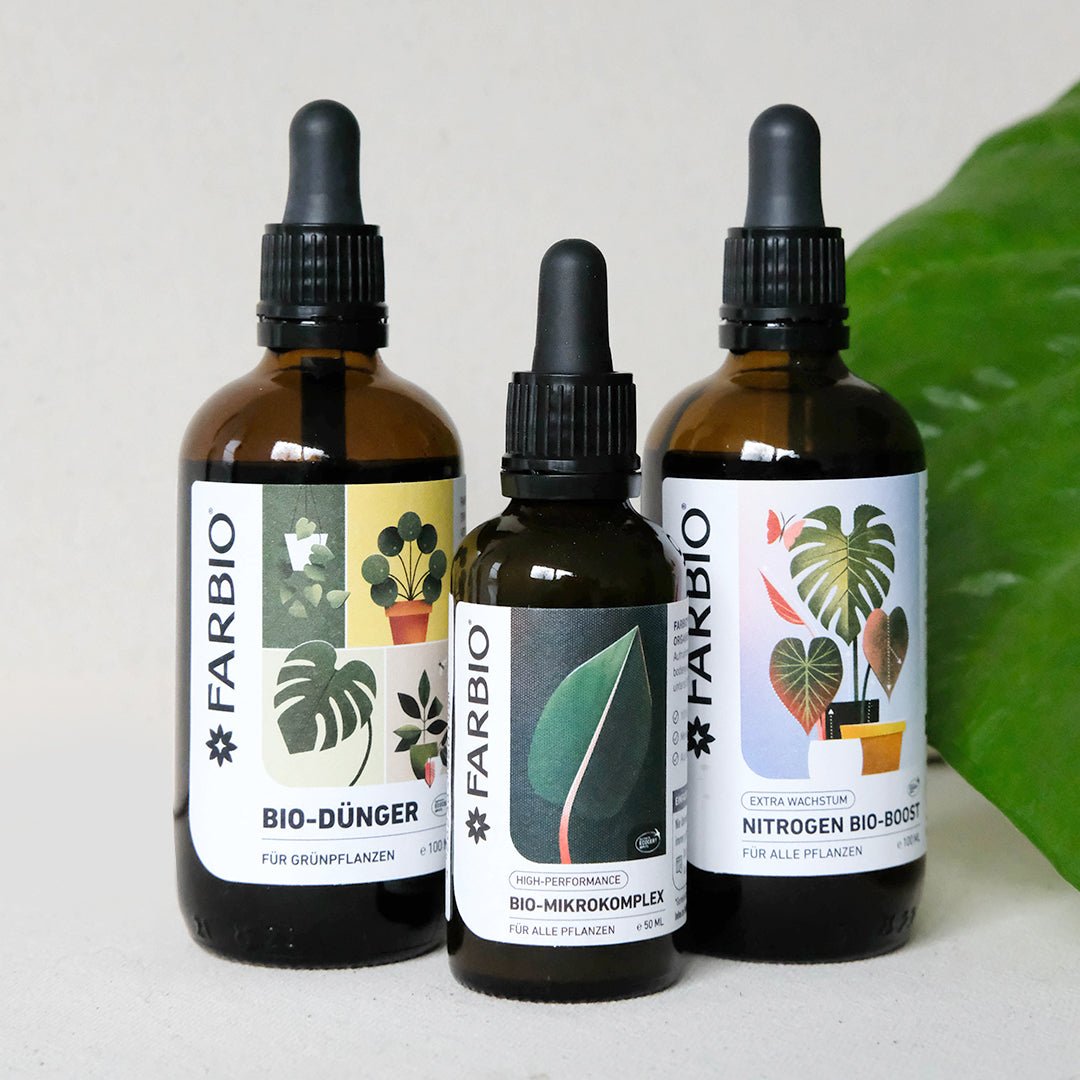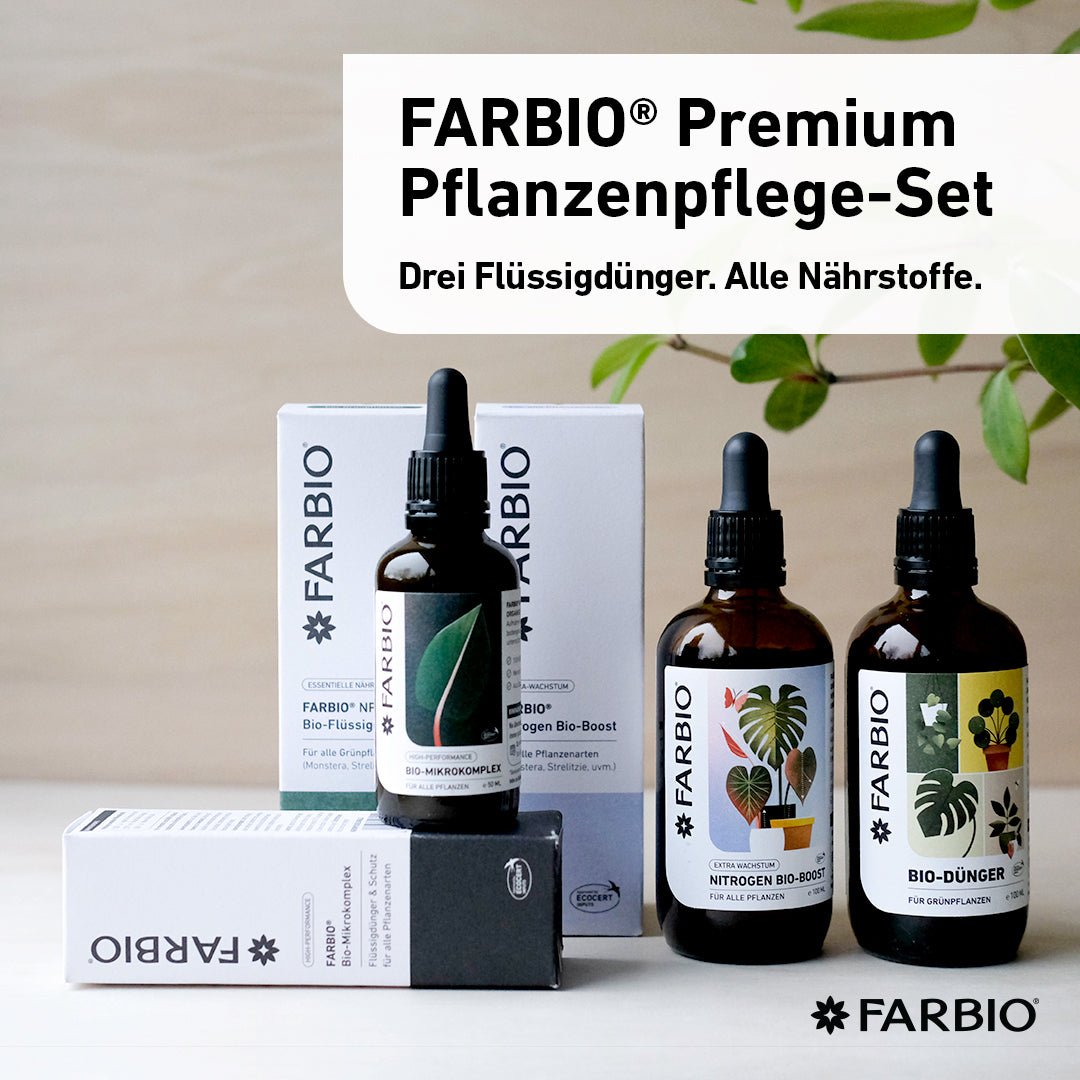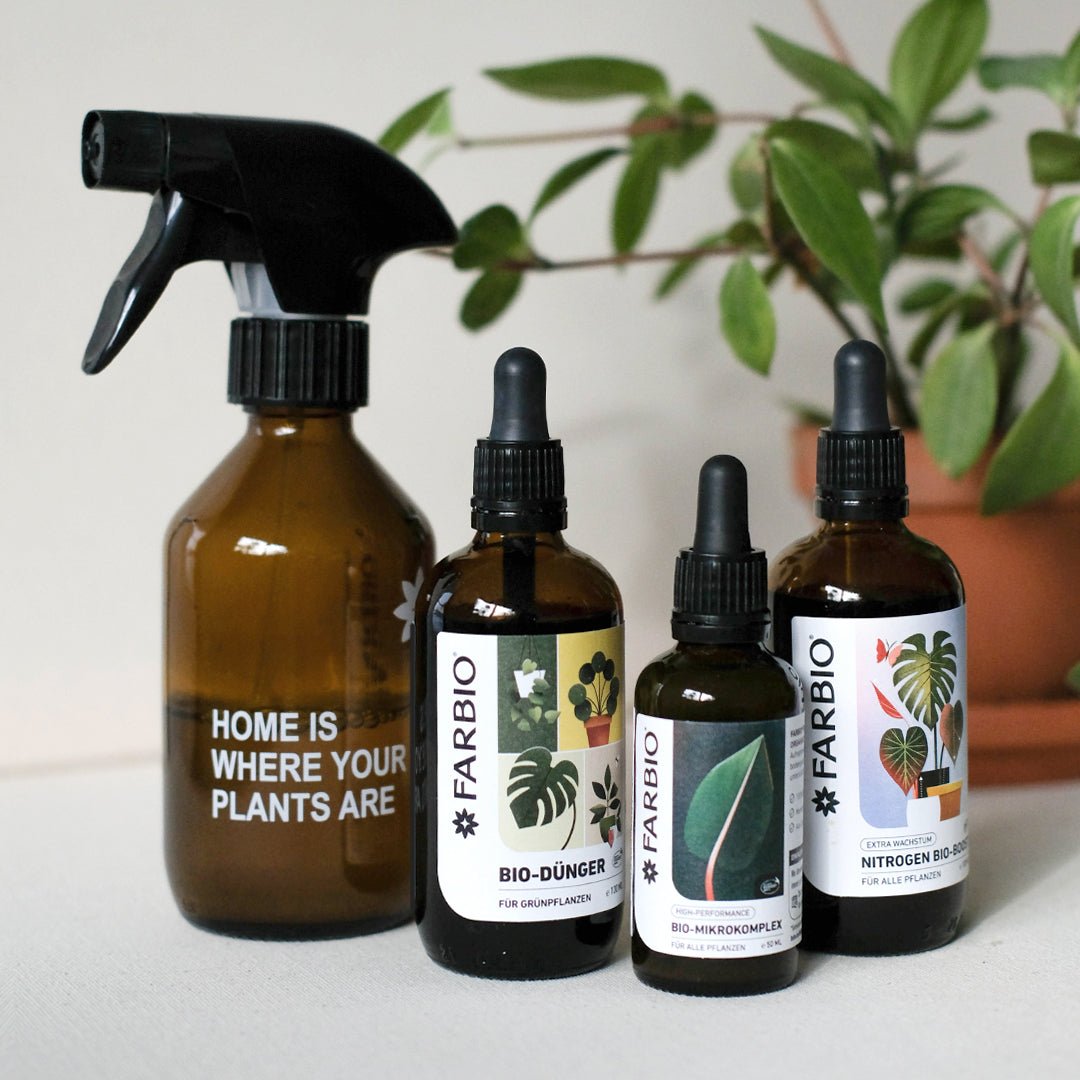Identify and treat nutrient deficiencies in plants
Your plant shows you what it's missing - you just have to recognize it! We will introduce you to the most well-known symptoms of common nutrient deficiencies so that you can react in good time. To prevent deficits from occurring in the first place, you should fertilize your houseplants regularly.
Recognize deficiency symptoms on young leaves and old leaves
Mobile nutrients are nutrients that can be transported from one plant organ to another as needed. These include nitrogen (N), phosphorus (P), potassium (K), chlorine (Cl) and magnesium (Mg). If there is a deficiency of these nutrients, the older leaves will be the first to show symptoms, such as yellow leaves, as the nutrients are transported from the older ones to the younger ones.
Nutrients that are only partially mobile or immobile can no longer be transported to other areas within the plant. These include zinc (Z), molybdenum (Mo), manganese (Mn), calcium (Ca), sulfur (S), iron (Fe), boron (B) and copper (Cu). If there is a deficiency in these nutrients, the deficiency symptoms are first seen on the young leaves.

This is how you can recognize the nutrient deficiency in plants:
No nutrient deficiency |
Depending on the type of plant, the leaves are usually a rich green color and show no signs of wilting or discoloration. |
Nitrogen deficiency |
When a plant's older leaves turn yellow, it is often a sign of a nitrogen deficiency. |
Phosphorus deficiency |
A lack of phosphorus leads to discolored leaves - usually reddish to black. |
Potassium deficiency |
A lack of potassium causes your plants to wilt despite sufficient water supply. Discoloration of the leaf edges occurs. |

Yellowed leaves with green veins:
Magnesium deficiency |
If there is a magnesium deficiency, the older leaves of your plant will turn yellow and the veins will initially remain green. |
Iron and manganese deficiency |
Causes a yellowish color in young leaves, although the veins of the leaves remain green for the time being. |

Other nutrients and their deficiency symptoms:
Zinc deficiency |
If there is a zinc deficiency, the young leaves of your plant will turn yellow from the tip. |
Calcium deficiency |
A lack of calcium becomes visible as brown spots on new leaves of your plant. |
Copper deficiency |
If plants get too little copper, the young leaves curl. Old leaves remain dark green. |

Proper prevention and treatment: Organic fertilizers for healthy plants
To prevent deficits from occurring in the first place, you should remember to fertilize your houseplants regularly. FARBIO® stands for natural and responsible plant care at the highest level.
Favorite fertilizer
The FARBIO liquid fertilizers provide important nutrients that your plants need. You can and should combine all fertilizers with each other.


